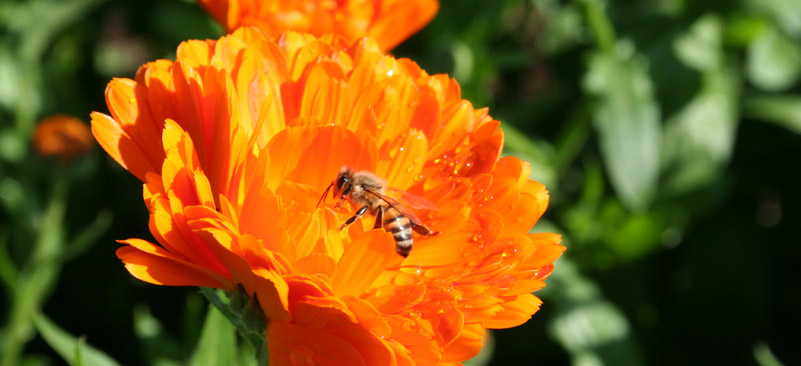 Le api: Chi sono le api
Le api: Chi sono le api |
Il ruolo dell'ape in natura
Beehive: Beehive |
Swarming |
Pollination |
Morphology and anatomy |
Diseases
Morphology and anatomy
The mouth member masses of the bee cover two tool kits, one for chewing and one for sucking. The most important chewing tools are the firm, kieferartigen Mandibeln (Oberkiefer). To form to deseam to cut open it used around wax to chew pollen to collect plant resins stick bees, blooms - to reach the inaccessible Nektar - and even, in order to hold enemies and to have so a firm starting point for the a stinging of the prick. Absorbing liquids becomes with the Proboscis (trunk) implemented, a fold upable apparatus from different mouth tools, which form a tube around the tongue. In this tube liquids move by movements of the bee tongue, by sucking with the mouth and perhaps also by capillary effect upward. The trunk serves to take up Nektar; the bee uses it in addition, for the water collecting, for the fodder exchange with stick bees, for the Ablecken of pheromones and similar substances of other bees and for distributing Nektar and water for a fast evaporation in the stick. If it is not used, the trunk is folded into a large furrow at the lower surface of the head. Firm fodder, mainly pollen, can be taken up not with the trunk, but, after it was zerkaut with the Mandibeln into small pieces, directly to the mouth is taken up.
The legs of a bee serve not only the Lokomotion (progressive movement), but also for the fodder collecting, because they possess special structures for transporting bloom polling, a normally dry, dust-like material. At the exterior of the broad Tibia (rail) of each Hinterbeines ine device, which holds the bloom dust, is the so-called Koerbchen. Its top side is smoothly, easily trough-shaped deepened and inward hair curved by a wreath/ring of long, set in. The pollen is moistened with Nektar, loaded then oh into the Koerbchen and held by the hair at its place. Bees, which are busy with polling collecting, are by the remarkable clumps of bright colored bloom dust (the so-called "panties"), loaded on their hind legs, to recognize immediately [ see the following picture ] the Koerbchen are also used, in order to transport Propolis (cement resin), which is collected by sticky tree buds and used with the development of the bienenstocks.
The prick apparatus lies hidden in a special prick chamber in the last abdomen segment. It is a modified putting prick. The prick consists of two Stechborsten provided with Widerhaken and the prick gutter. Both interlink, in order to form a Giftkanuele within the military prick. The bee poison is formed in a giftdruese, which extends to a blister, in which the poison is collected. If the bee stings, it drives poison into the Stachelkanuele and the sharp Stechborsten is pushed into the skin of the attacked animal. If the bee tries its prick from firm skin to withdraw or the enemy tries a stinging bee to strip, ensures the Widerhaken at the Stechborsten for the fact that the stechapparat remains embodied. In consequence its dies the bee.
Continue with: Diseases

